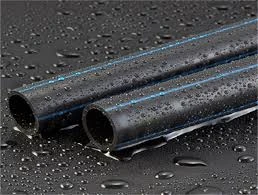Dec . 16, 2024 20:05 Back to list
Understanding HDPE Pipes and Fittings for Efficient Plumbing Solutions
Understanding HDPE Pipes and Fittings A Comprehensive Overview
High-Density Polyethylene (HDPE) pipes and fittings have emerged as a leading choice for various industrial applications, thanks to their durability, flexibility, and resistance to corrosion. These characteristics make HDPE an excellent material for a wide array of sectors, including water supply, drainage systems, and gas distribution. In this article, we delve deeper into the properties, advantages, applications, and the installation of HDPE pipes and fittings, illuminating their role in modern infrastructure.
Properties of HDPE Pipes
HDPE is a thermoplastic polymer made from petroleum. Its molecular structure contributes to its unique properties that make HDPE pipes and fittings highly advantageous
1. Durability HDPE pipes are resistant to a wide range of chemicals and environmental stressors, which ensures a long service life. They can withstand harsh weather conditions and do not rust, rot, or corrode.
2. Flexibility Unlike traditional materials such as PVC or steel, HDPE pipes offer significant flexibility, allowing them to bend without breaking. This feature is particularly beneficial in areas with variable terrain or where soil movement is a concern.
3. Lightweight HDPE pipes are considerably lighter than their counterparts, making them easier to transport and handle during installation. This helps to reduce labor costs and simplifies the installation process.
4. Non-Toxic HDPE is safe for potable water applications. Its non-toxic nature ensures that the quality of drinking water remains unaffected.
Advantages of HDPE Pipes
The advantages of using HDPE pipes and fittings are multifaceted
- Cost-Effective The long lifecycle and low maintenance requirements of HDPE pipes lead to significant cost savings over time. Their resistance to clogs and leaks also reduces the need for frequent repairs.
- Environmental Benefits HDPE is recyclable, making it an environmentally friendly alternative to other materials. The production of HDPE pipes involves fewer greenhouse gas emissions compared to traditional pipes.
- Easy Installation The flexibility of HDPE pipes allows for a straightforward installation process, often requiring fewer fittings than rigid pipe systems. Additionally, advanced joining techniques, such as butt fusion and electrofusion, ensure seamless connections.
hdpe pipes and fittings

- High Flow Capacity The smooth inner surface of HDPE pipes minimizes friction, allowing for increased flow rates and reduced energy costs for pumping
.Applications of HDPE Pipes and Fittings
HDPE pipes and fittings are utilized across numerous sectors
1. Water Supply Municipal water systems frequently use HDPE pipes due to their reliability and safety standards. They can transport drinking water over both short and long distances without leaching harmful substances.
2. Wastewater and Drainage HDPE is commonly employed in sewer systems and drainage applications. Its resistance to corrosion and chemical damage makes it ideal for transporting industrial and municipal wastewater.
3. Gas Distribution HDPE pipes are also used in natural gas distribution systems due to their strength and ability to withstand high pressures.
4. Irrigation Systems The agriculture sector benefits from using HDPE piping in irrigation systems, where durability and cost-effectiveness are essential for optimum crop production.
Installation and Maintenance
The installation of HDPE pipes typically follows a series of steps. Proper planning, including site assessment and material selection, is crucial. The pipes are often joined using fusion methods that create a monolithic structure, enhancing the integrity of the system.
Maintenance of HDPE systems is generally minimal due to the material's robustness. However, regular inspections are needed to ensure no obstruction or damage, and issues like ground movement or excessive pressure should be addressed promptly.
Conclusion
HDPE pipes and fittings represent a significant advancement in modern piping solutions, characterized by their durability, flexibility, and environmental sustainability. As industries continue to seek efficient and reliable infrastructure solutions, the demand for HDPE pipes will likely grow. With their versatility across multiple applications, HDPE products are setting new standards in the realm of pipe manufacturing and installation, promising a more sustainable and durable future.
-
Durable Glossy PVC Rigid Sheet | Premium High-Shine Panels
NewsAug.26,2025
-
Durable PP Rigid Sheet: Lightweight, Chemical Resistant Solutions
NewsAug.21,2025
-
PVC Grey Sheet for Extraction: Chemical Resistant & Durable
NewsAug.19,2025
-
Durable PVC Pipe Fittings for Plumbing & Irrigation Needs
NewsAug.18,2025
-
HDPE Steel Belt Reinforced Spiral Corrugated Pipe | High Strength
NewsAug.17,2025
-
HDPE Pipe Fittings: Durable, Leak-Proof Solutions
NewsAug.16,2025

